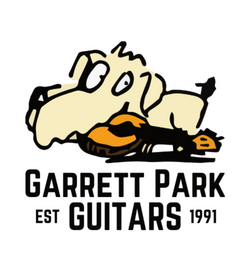1961 Gibson RVT-79 Amp
Garrett Park Guitars
This guitar is in our Hall of Fame Collection and is no longer available for purchase.
For your consideration, Garrett Park Guitars presents this 1961 Gibson RVT-79 Amp
This super clean RVT-79 amp sounds amazing, it has just been serviced and a grounded three prong plug added to the original cable. Its condition also amazing!
From Gibson's website..."Produced between 1961 and 1967, the GA-79RVT is a freak of nature in so many ways—most of them very cool ways. This wild-looking, wedge-shaped concoction is actually a stereo amplifier, meant to partner Gibson’s stereo guitars of the era such as the ES-345 and ES-355, but it can also be used in a variety of configurations with any traditional mono electric guitar. In many ways, the GA-79RVT is a fairly simple amp, and is really more a “two amps in one” designed to reproduce a stereo signal, rather than a design that produces a stereo-like effect, such as achieved by the Magnatone 260 and 280, or the Roland Jazz Chorus, both of which convert a mono guitar signal to stereo by slapping on tremolo or chorus effects with slightly different rates applied to the left and right signals.
As such, the GA-79RVT’s features are pretty straightforward: it has two independent preamps with their own Volume, Bass and Treble controls (the latter using ganged potentiometers with stacked knobs) plus Tremolo and Reverb (on Channel I only when in Stereo mode). Each channel can be linked and fed together to both of the dual output stages, or fed individually to its own stage and on to its own speaker. The amp is often described as producing “2x15 watts in stereo mode or 30 watts in Mono,” but that’s kinda’ the same thing. Whichever way the switch is thrown, each of the speakers receives a potential 15 watts of power from its own two output tubes and an independent output transformer, so the Stereo-Mono switch doesn’t gang the output stage, it just feeds the two equal yet independent stages a common signal. The “stereo” aspect comes into play when, for example, a stereo ES-345 is plugged into the TRS Stereo input jack, which routes the neck pickup to one channel and the bridge pickup to the other. Otherwise, the channels can be given entirely independent input signals from two guitars or a stereo effect unit.
Oddball factor number one is, of course, the dramatic wedge-shaped cabinet, with two Jensen P10Q speakers mounted at an angle of approximately 45 degrees to each other. The design accentuates the stereo field, but also creates a sonic dead spot in the front-center of the amp until you get quite a distance away from it. Oddball factor number two is the tubes used here: three 6EU7s, a 7199 (these for preamp, reverb and tremolo duties), a 12AU7 phase inverter, and four 6BQ5s (EL84s) in the cathode-biased output stage. There’s no tube rectifier here, and instead, silicone diodes provide solid-state rectification that keeps the voltages a little firmer at the tubes, leading to a little less sag (though when cranked, these amps will still compress plenty). The design aims for smooth, round, clean tones at low to medium volumes, but yields a sweetly textured crunch when you roll it up, with a slightly British-leaning voice thanks to the EL84s.
Spares of some of these more unusual preamp tubes can be a little hard to track down, and the amp itself is quite a rare bird—only 335 were manufactured in 1962, at its peak of production, and just 39 in its final year, 1967—so it is likely to be found sitting in collections more than shaking its stuff on stage."
Serial Number: S02848
Condition: Excellent
Please call, chat, or email for more information...
Couldn't load pickup availability
If you have a guitar similar to this and are interested in selling it or having it appraised, use the "Chat with us" button or fill out the form below!






















